Far too many companies are the best-kept secret in their industry.
What this means is that they have a great product or service, yet people simply don’t know about them.
These companies are not generating enough interest in the marketplace, and they don’t have enough sales leads. As a result, everything else suffers in the sales process.
If you’re a salesperson working at a “best-kept secret” company, you need to put in place a prospecting campaign that allows you to effectively get the word out there—to really drive sales leads and engage in conversations with prospects.
In this video, I’m going to show you 7 ways to generate more sales leads this year with a prospecting campaign (plus two bonus tips at the end). Check it out:
Video Summary:
Sales Leads Tip #1: Cold email should drive the entire campaign.
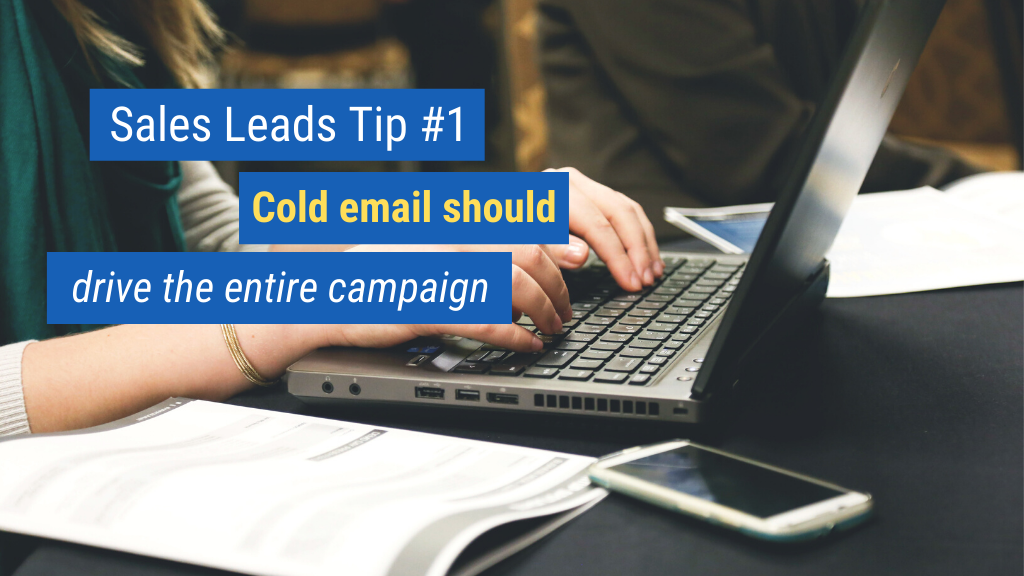
When salespeople prospect by making cold calls all day, every day, they miss out on huge opportunities for sales leads. Why? Because when cold calling is your only prospecting strategy, you’re basically just haphazardly reaching out to prospects on the phone at random times.
Today’s data is unequivocal about the fact that cold email—sending emails to prospects—is far more effective than cold calling. In fact, it’s one of the most effective ways to generate interest and set meetings in sales.
Cold email is also one of the easiest ways to drive the entire prospecting campaign, because of automation. You can connect your emails into your CRM system, making it very simple to implement email as the first step in your prospecting campaign.
If you want to generate more sales leads this year, then cold email should drive your entire prospecting campaign. The rest of your campaign will support and build off of those prospecting emails.
Sales Leads Tip #2: Send LinkedIn connections.
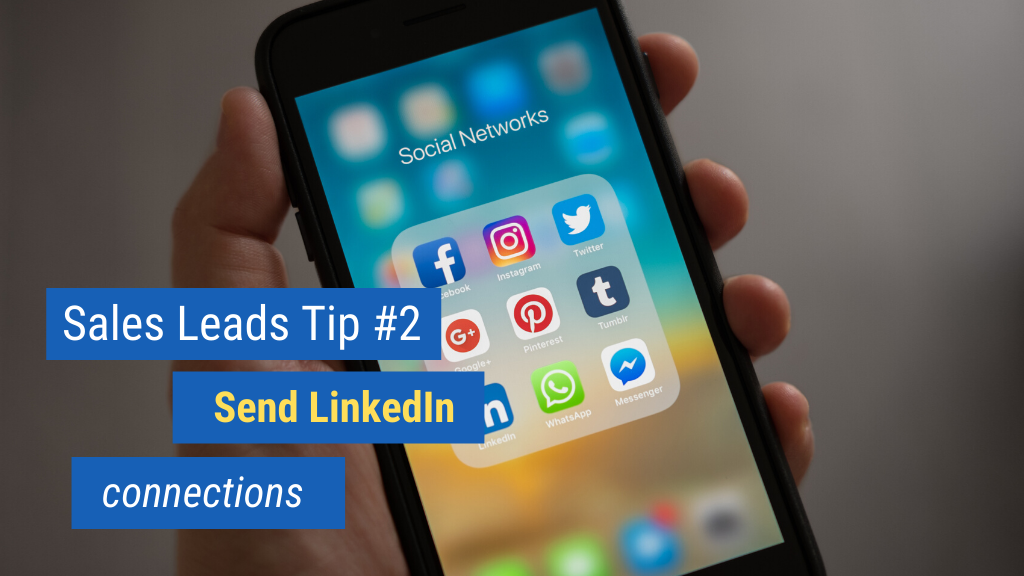 Every salesperson should be sending LinkedIn connections to prospects today. The data shows that even if you send a random LinkedIn connection to someone that doesn’t know you, you still have about a 1 in 4 chance of having your invitation to connect accepted.
Every salesperson should be sending LinkedIn connections to prospects today. The data shows that even if you send a random LinkedIn connection to someone that doesn’t know you, you still have about a 1 in 4 chance of having your invitation to connect accepted.
But I’m not talking about just sending out automated LinkedIn connections. I’m talking about sending out personalized LinkedIn connections—after you’ve sent prospects cold emails. This way, there’s a chance that they’re actually going to know who you are.
When you combine cold email with a LinkedIn connection, prospects start to think, “Oh, this is a real person, an actual human being who’s reaching out to me.”
Make LinkedIn connections count by sending them after your cold emails as part of your prospecting campaign. These two points of outreach have a great synergy that will make sales leads take notice.
Sales Leads Tip #3: Make prospecting calls.
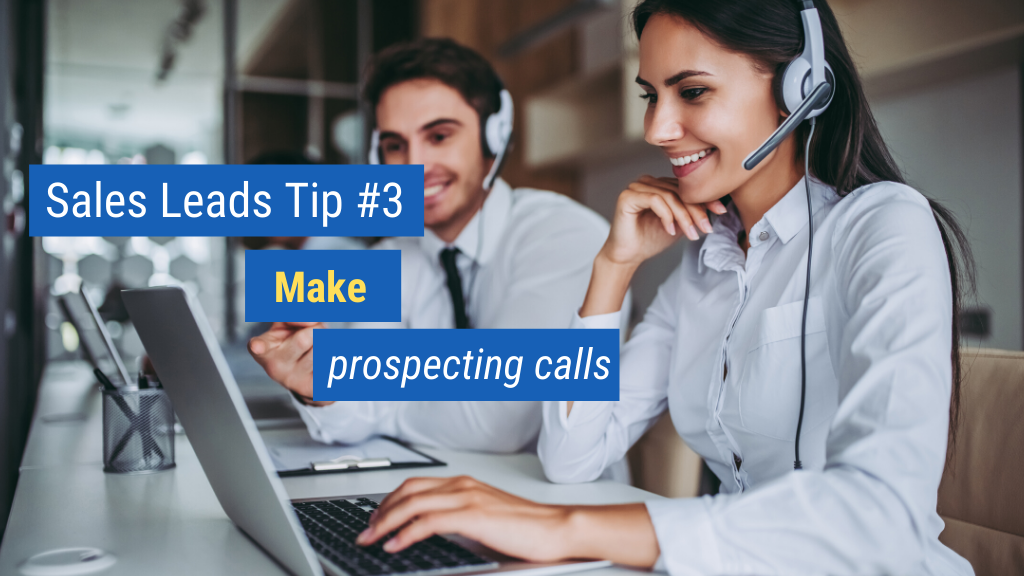
Many sales reps start their prospecting process with the cold call. And that’s a really big missed opportunity.
Let’s just say that you actually get a prospect on the phone on the first dial—which is very unlikely. Even then, they have no idea who you are, and it’s difficult to engage them in a real conversation.
I’m not saying it’s impossible. Cold calling can certainly work, but it’s way more difficult than making a prospecting call after you’ve already sent the person a couple of emails and a LinkedIn connection.
At that point, if you actually get your sales leads on the phone, they’re much more likely to know who you are. And that makes the prospecting call a warm call instead of a cold call. This is a really important distinction, and it makes your life so much easier.
Sales Leads Tip #4: Use voicemail.
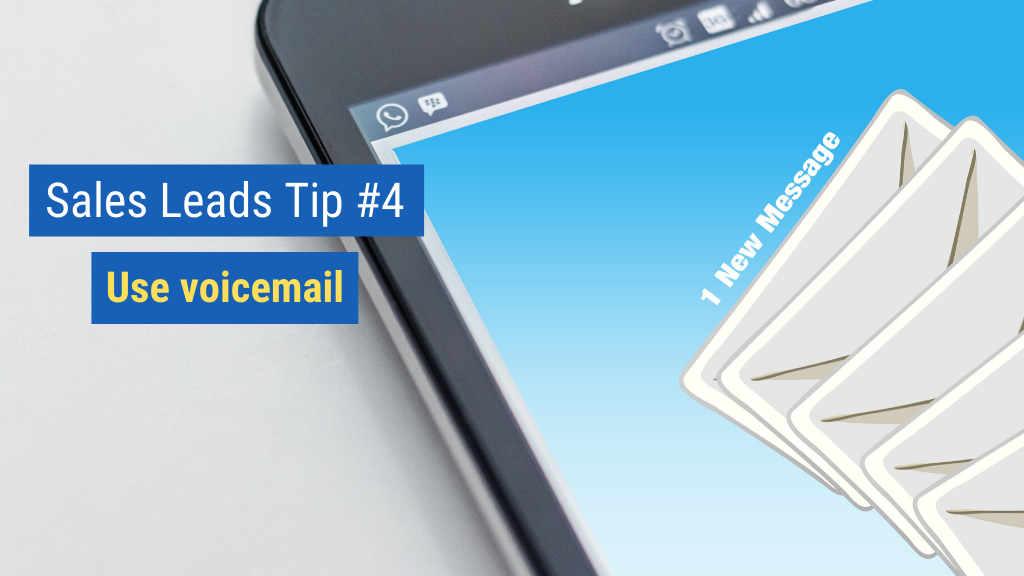
A lot of salespeople tell me they never leave voicemails. This is a lost opportunity. Voicemails are key to generating more sales leads.
Think about it this way: If you’re making all of these dials, you might as well leave some voicemails, too. The question is, what are you actually going to say on the voicemail?
I have a number of YouTube videos that walk you through leaving voicemails, so you can look those up if you’re interested. But the key idea here is that you want to leave a voicemail every 4 to 6 dials. Make it part of your prospecting process. You don’t have to do it every single time, but every 4 to 6 calls, hang on the line and leave a voicemail for that prospect.
In your voicemail, refer back to what you’ve been sending to the prospect along the way. Maybe you’ve sent them an email offering them something of value. In the voicemail, you’re going to leave a concise, very quick message that reinforces what you said in that email.
It might sound something like, “George, Marc Wayshak here, 617-555-1212. I just sent you an email about __________.” Then close out with something like, “I’ll be in the office this afternoon and tomorrow morning. My phone number 617-555-1212. Look forward to talking.”
You’re being concise. You’re making it clear what the expectation is. And you’re reinforcing what you’ve already sent them.
While it’s unlikely that they’re going to call you back, if they hear your voicemail right after seeing your email, and then remember that they connected with you on LinkedIn a few days ago, it all starts to come together. They realize you’re being persistent, and you’re trying to offer them something of value. So they start to pay attention.
Sales Leads Tip #5: Send a FedEx package.
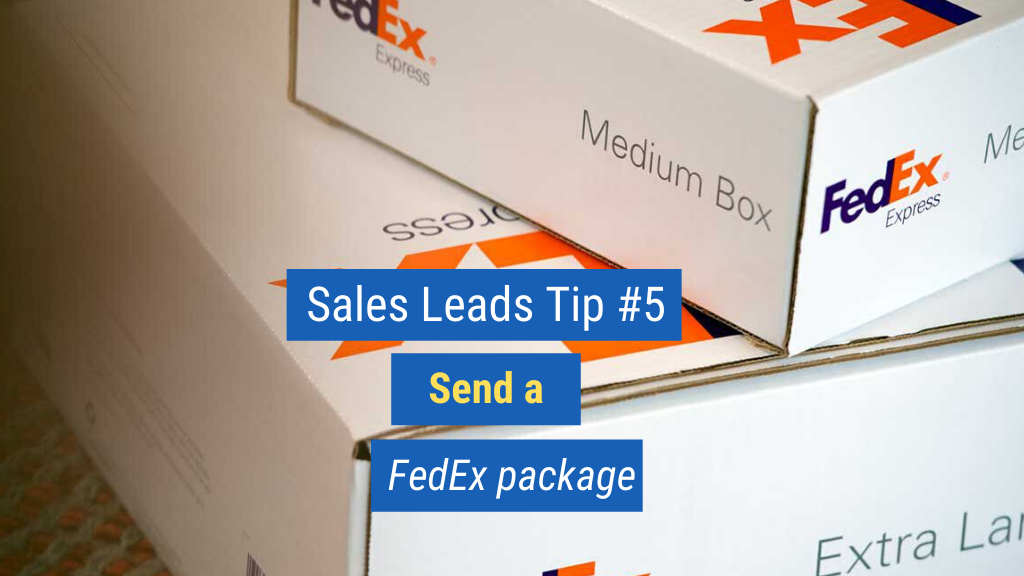
I don’t have a special relationship with FedEx, but I can tell you right now that even the CEO of a large company is very likely to open a FedEx package. It’s more expensive. It has a higher perceived value. Ultimately, sales leads are just more interested in what they receive in the mail if it’s a package or a box.
You won’t send a FedEx package to every prospect on your list, but maybe you have a list of your Top 20 prospects who this will apply to. Come up with that list and work FedEx into your prospecting campaign when you map out each step.
At some point, send them something of value, something that’s relevant to them. Maybe it’s a sample. Maybe it’s an eBook that you print out and give to them. Maybe it’s a hardcover book. It can be a lot of different things but, whatever it is, you should send it along with some kind of a note, ideally a handwritten one.
If you do this, the package will get opened, and your note will get read. Then you’ll be following up on that FedEx package with an email, with calls, etc.—so it will all fit into this big campaign that ultimately increases the likelihood that your sales leads will agree to a face-to-face meeting.
Sales Leads Tip #6: Write a letter.
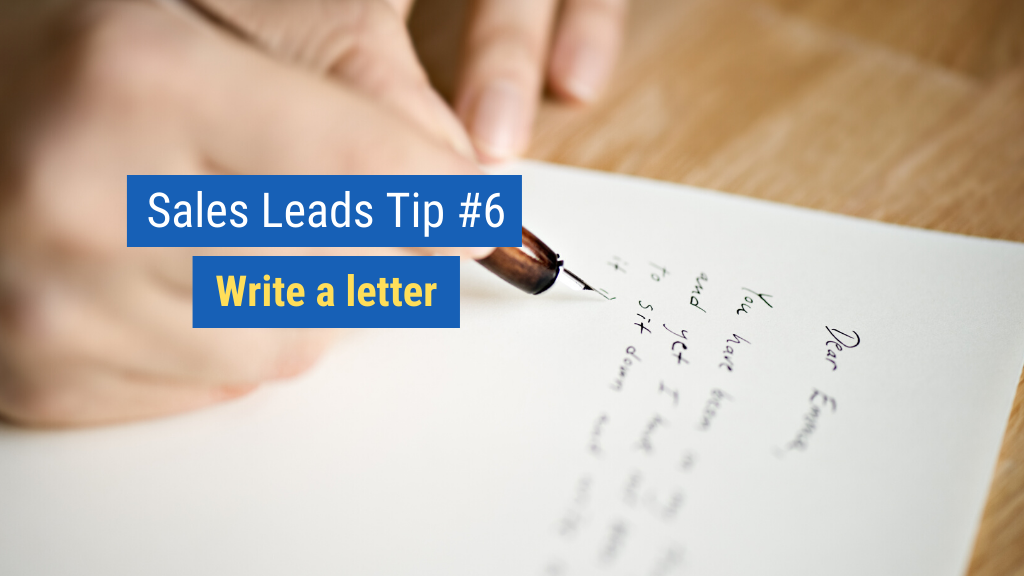
This is as old-school as it gets. Writing letters is a lost art. For so many years, salespeople were all sending letters to prospects. Nowadays, nobody is sending letters. It’s a really powerful tool, though. It can be a professional typed-up letter, but I suggest that you add your real signature, and maybe a handwritten P.S. at the bottom. You’ll stand out from the crowd because sales leads are likely to open a letter, especially if you handwrite the address.
And the letter shouldn’t be super salesy. It should be something that is of value, with a call to action that’s engaging. Sending a letter in conjunction with all of the other strategies we’ve discussed will have prospects thinking, “Wow. This person has sent me so many different things. They sent me a LinkedIn connection. They emailed me. They called me. They left me a voicemail. They sent me that FedEx package. And now they’re following up with a hand-addressed letter.” The end result is that they are so much more open to picking up the phone the next time you call, or replying to your next email.
What’s amazing is that you can actually do this with 50 or more prospects at a time. And if you’re doing it in a way that’s efficient, it doesn’t have to be a huge amount of work.
Sales Leads Tip #7: Drop in.

Speaking of old-school prospecting…I’m literally suggesting that you go to someone’s office. Drop in. Say hi.
Now, I know that this isn’t possible in every scenario. You may have a prospect who lives across the country. But there are probably some sales leads who live nearby you.
Even if it’s the high-level buyer at a Fortune 500 company, you can stop in and maybe hand-deliver a package. You may not actually get to them face-to-face, but just the act of dropping in is going to make you stand out.
This takes guts, so not many salespeople are willing to do it. The other approach—if you really want to get ninja about it—is to be in their office parking lot at about 8:00 a.m. to catch them as they’re walking into the office. Look at their LinkedIn profile. You know what their face looks like, so you can stop them as they’re walking by.
Again, this takes guts, but if a prospect is a high-level person, and could mean a lot in sales and commission, then it’s worth it. Get face-to-face in any way you can.
Sales Leads Bonus Tip #1: Send exclusive event invitations.
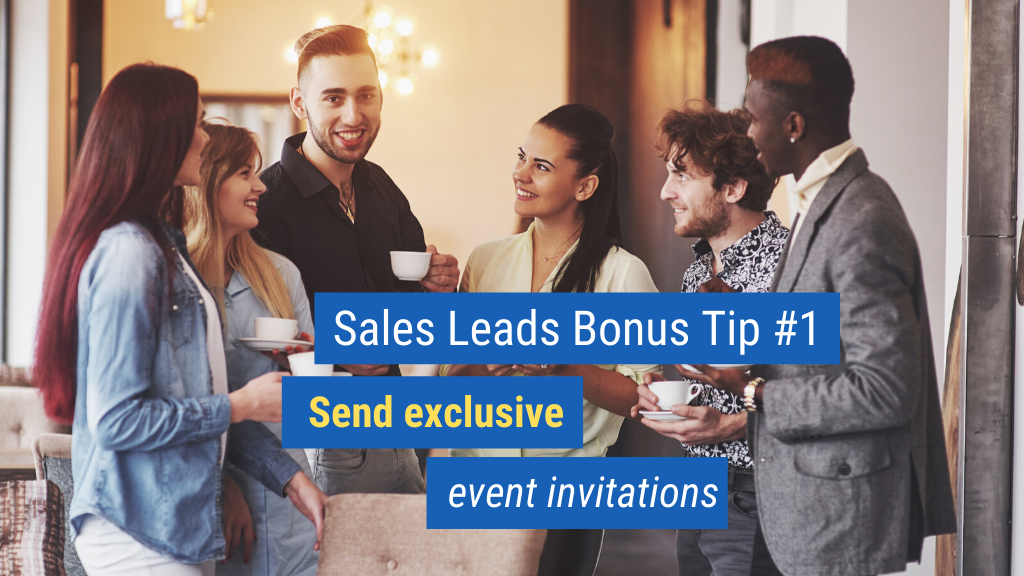 I know not everyone is going to use this, but exclusive events are gold when it comes to generating sales leads. Put together an exclusive event and send your prospects an invitation. These invitations are so attractive to the right prospects.
I know not everyone is going to use this, but exclusive events are gold when it comes to generating sales leads. Put together an exclusive event and send your prospects an invitation. These invitations are so attractive to the right prospects.
Choose a nice location for your event. When we host exclusive events for our prospects, we do it at the Harvard Club of Boston. CEOs like that. They’re interested in going. So be sure to pick a location that high-level prospects will want to visit. Send them an actual invitation and work it into your prospecting campaign as part of the process.
Sales Leads Bonus Tip #2: Tweet them.
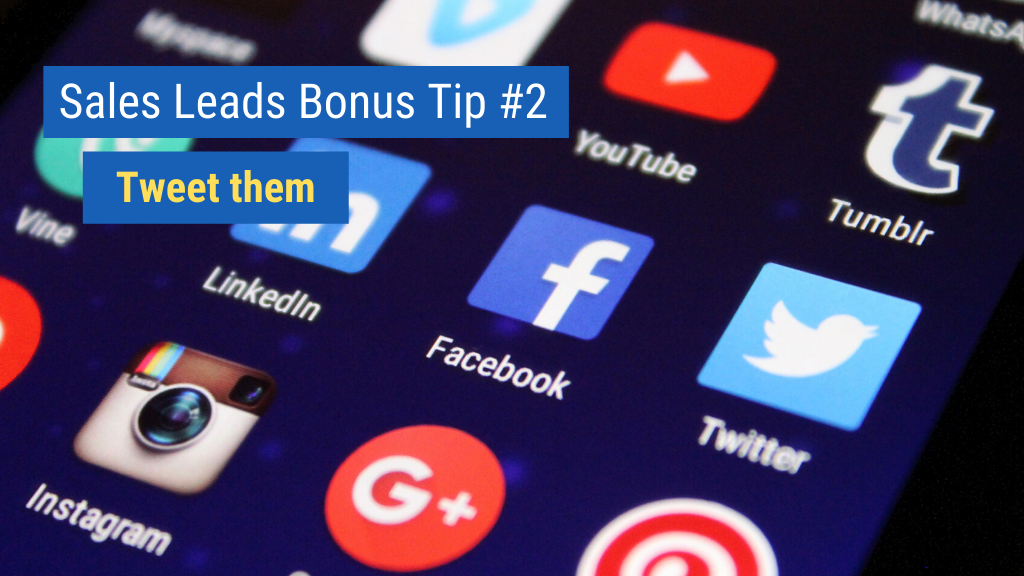 Twitter won’t be relevant to every single prospect, but a lot of high-level prospects actually are on Twitter—and they’re pretty active. If you have a prospect on Twitter, you can send them a direct message, or tweet at them publicly, and you’re just that much more likely to get in front of them.
Twitter won’t be relevant to every single prospect, but a lot of high-level prospects actually are on Twitter—and they’re pretty active. If you have a prospect on Twitter, you can send them a direct message, or tweet at them publicly, and you’re just that much more likely to get in front of them.
 So, there you have it. Now you know 7 ways to generate more sales leads this year with a prospecting campaign (plus two bonus tips). Which of these ideas did you find most useful? Be sure to share your thoughts in the comments section to join the conversation.
So, there you have it. Now you know 7 ways to generate more sales leads this year with a prospecting campaign (plus two bonus tips). Which of these ideas did you find most useful? Be sure to share your thoughts in the comments section to join the conversation.
Enjoyed this article? Please share away!

Get instant access to our free sales training:
Why Prospects Push Back on Price, Give 'Think-It-Overs,' and Ghost in Sales Until They Meet a Sales Superstar Who Is Following These 7 Simple Keys

About the Author Marc Wayshak
Marc is is the best-selling author of three books on sales and leadership, including the highly acclaimed titles Game Plan Selling, The High-Velocity Sales Organization and his forthcoming book, Sales Conversations, Mastered.
Marc is a contributor to Inc, HubSpot, Fast Company, Entrepreneur Magazine, and Huffington Post Business. He also hosts a popular YouTube channel on sales strategy with over 103,000 subscribers.
Marc helps thousands of people his data-driven, science-based approach to selling that utilizes all the best tools available to sales organizations today.

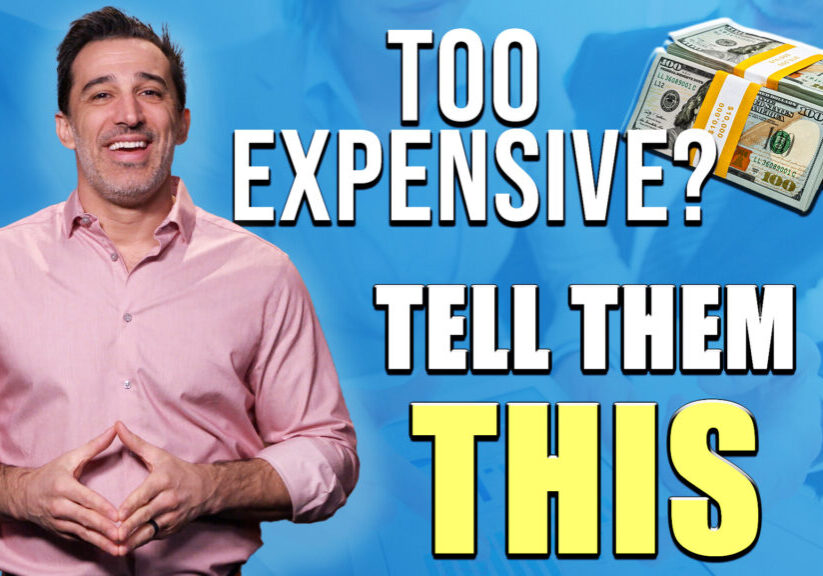
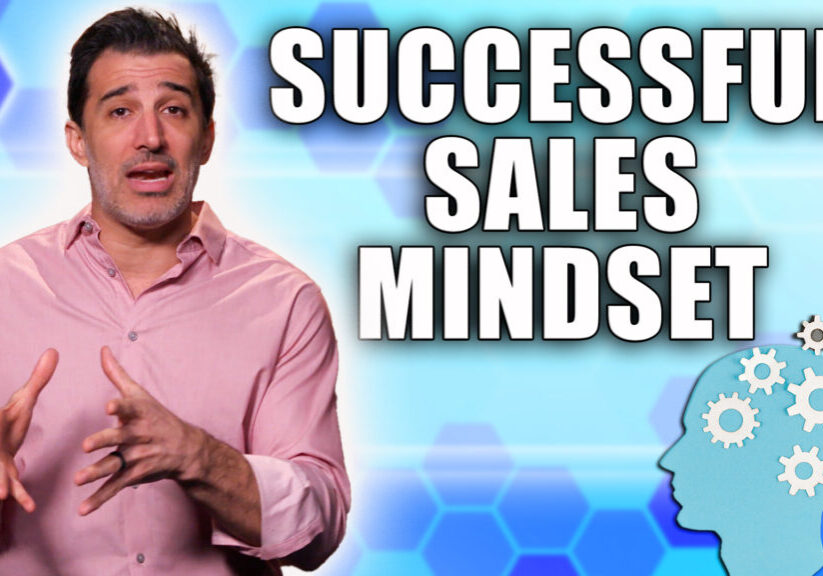
![How-to Sell to Power [C-Suite Sales Must-Knows!] How to Sell to Power [C-Suite Sales Must-Knows!]](https://salesinsightslab.com/wp-content/uploads/bb-plugin/cache/How-to-Sell-to-Power-C-Suite-Sales-Must-Knows-1024x576-landscape-7a52c541b28a7b772ad9e1010d8240be-.jpg)

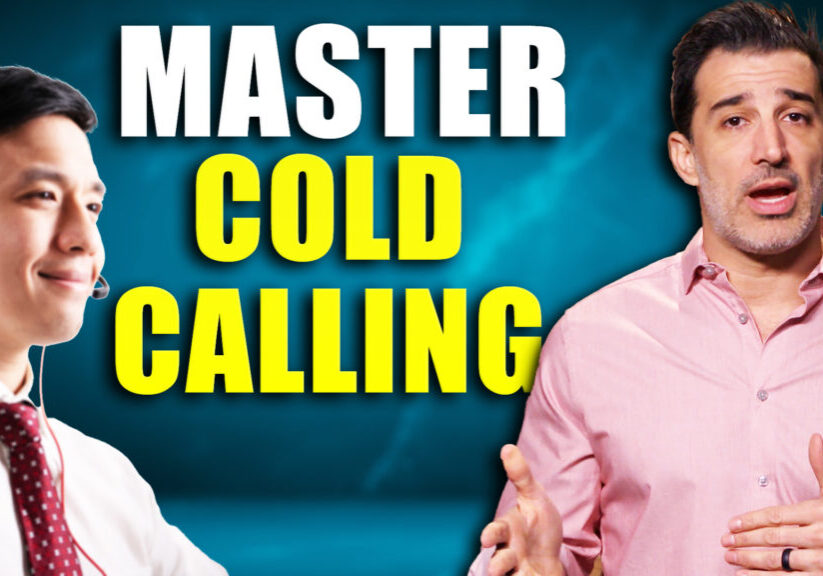
![The Absolute Best Way to Start a Sales Conversation [WITH ANY PROSPECT] The Absolute Best Way to Start a Sales Conversation [WITH ANY PROSPECT]](https://salesinsightslab.com/wp-content/uploads/bb-plugin/cache/The-Absolute-Best-Way-to-Start-a-Sales-Conversation-WITH-ANY-PROSPECT-1024x576-landscape-be9d9379ab94d9f71b5bfeed42246a84-.jpg)